Related Content
Content
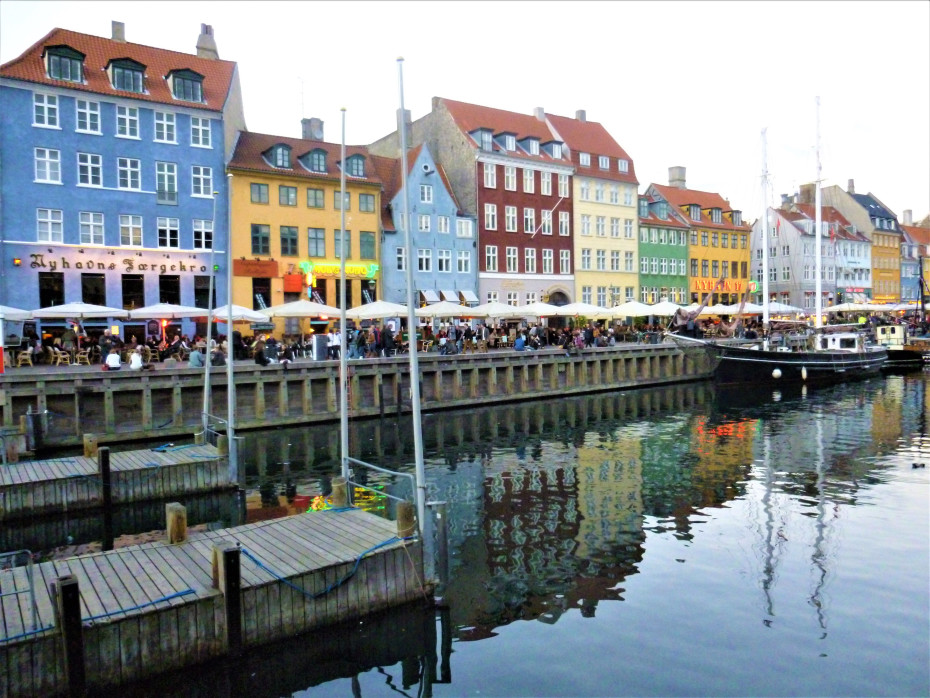
Episode 5: Nipping across a border for something to eat
A short trip across a border in order to have a supper and a beer or two in another nation's capital, and then heading back to bed in that other country. The wonders of Europe by train!
Share
Over the Oresund Bridge:
On arrival in Malmo I checked in at the Comfort Hotel, which ticked all the boxes on my ideal accommodation criteria and because I’d been able to book a great rate, I was able to wallow in more luxury than usual.
But there wasn’t time to linger as I seized the opportunity to exploit my InterRail pass, in order to spend an evening in Copenhagen.
I had a spring in my step as I headed back to Malmo C station, as the next train I’d be taking would carry me across the staggering engineering achievement that is the Oresund Bridge.
Even before its construction was complete, the notion of being able to take a train from one country to another across a bridge, connected to a person-made island on which the train would dive into tunnel, had pushed by buttons.
Anticipation which had only be magnified by the title sequence of one of my fave Scandi-Noir TV series The Bridge; how cool does that train look racing out across the expanse of sea!
It took me less than a minute to decide that Malmo C is a very fine station indeed, kudos to whoever designed the placement of the signage, as it’s an exceptionally easy station to navigate, despite the fact that many trains, including all the Oresundtag trains to Denmark, depart from a lower level to the main concourse and station buildings.
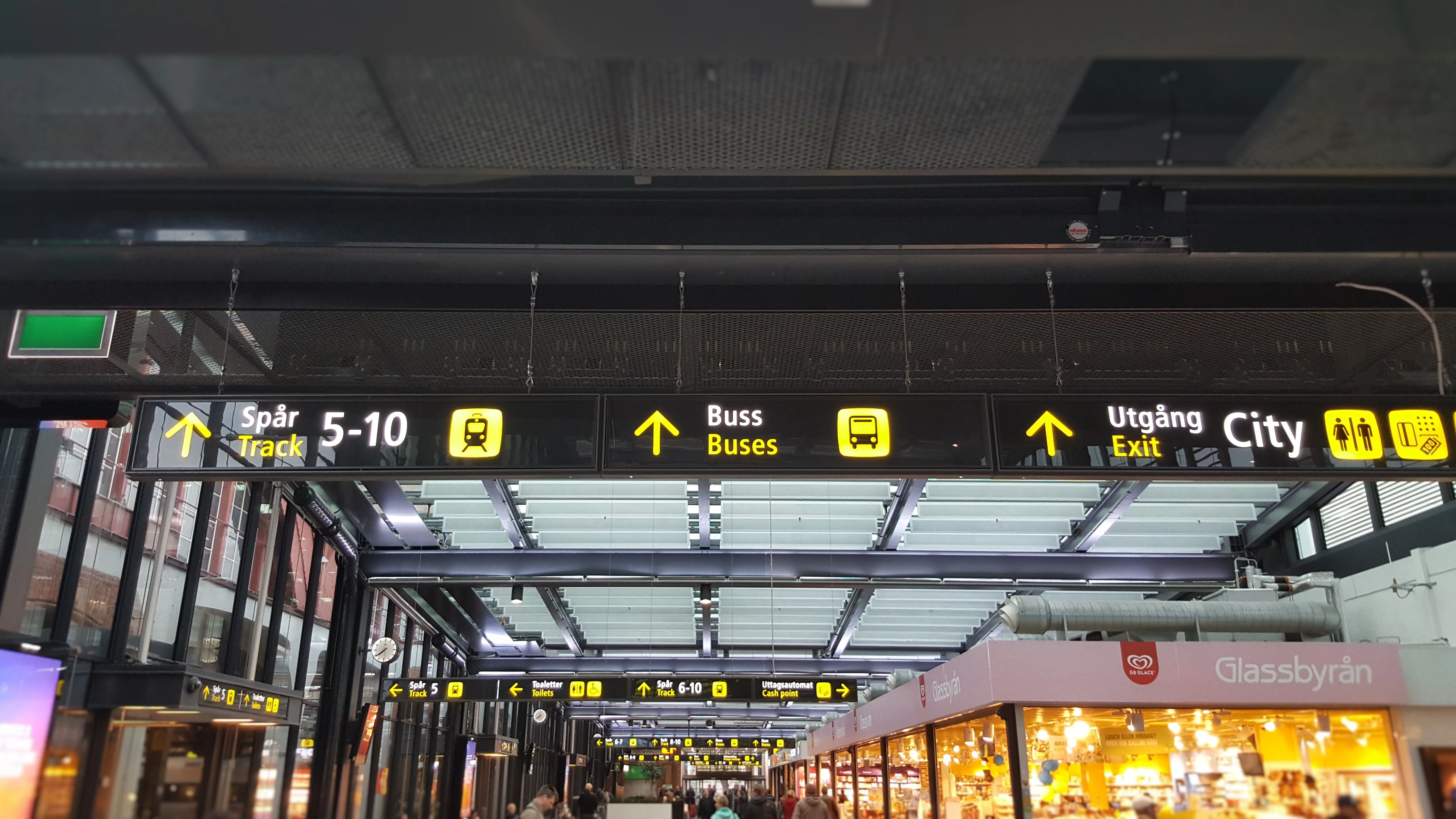
Though what initially threw me off was that I couldn’t find Kobenhavn on the train departure screens.
I wasn’t expecting to see ‘Copenhagen’ as despite the signage at the station having English translations, which is fairly common, the English names of cities are hardly ever used on departure screens, the local population understandably prefers to see the name of a town or city that they’d be most familiar with.
Some lateral thinking, helped by the fact that the trains depart Malmo for Kobenhavn every 20 minutes, made me realise that what I need to take was a train calling at ‘Kopenhamn’.
I was in Sweden so of course the Swedish name for the Danish capital was being shown, despite it being less than a 30 min train ride away; a ride I was about to take!
Malmo over Copenhagen
Copenhagen is less than 30 mins from Malmo by train, which is why I opted to sleep in Sweden and not in the Danish capital.
Thanks to my InterRail Pass I wasn’t having to pay any extra in travel costs to make this train journey.
Spend more than a few minutes on a hotel room rate website and you’ll soon discover that prices in Malmo can be around half of those in Copenhagen.
So a tip if you’re thinking of spending a long weekend in Copenhagen is to stay in Malmo instead.
The frequent trains between the two cities also call at Kastrup Airport, so getting to and from Malmo is no more complicated than making the transfer between the airport and the Danish capital.
An unexpected journey
The train burst out of a tunnel and I was on the bridge, the not particularly picturesque stretch of Swedish coastline soon disappeared and all I could then see from the train window was the sea and the sky.
A unique vista from a European train window but not a particularly thrilling view, though when the weather is right, it must be glorious, but not today.
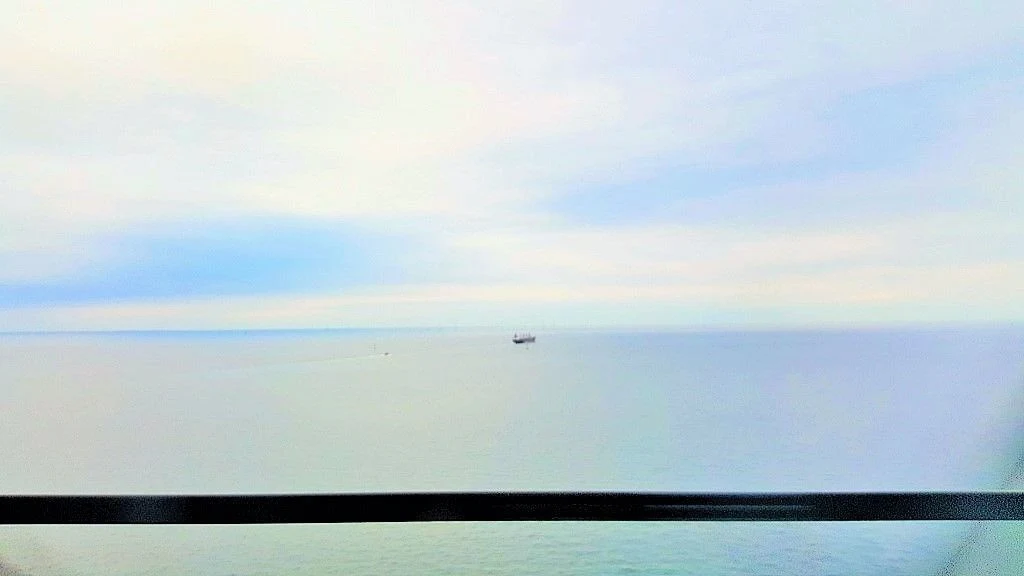
My efforts to capture the vista on my smart-phone were being thwarted by the fact there wasn’t one - the sea and sky weren’t being separated by a horizon; and the struts which support the railway deck beneath the road, kept getting in the way of the photos.
I decided that the experience, or relative lack of it, would be best captured by video mode, but within seconds of pressing record, the train started to descend to the island, on which it enters a tunnel for the remainder of the crossing to Denmark.
This island is far enough out to sea, so that the Danish coast can only be glimpsed in the distance.
Less than three minutes after the train had started to cross the bridge it was all over, I scanned through my gallery to discover that I didn’t have one usable image; not what I’d anticipated, at all.
But this was day three of my adventure and as can be seen across ShowMeTheJourney, I’ve learnt a lot more about taking snapshots from a train since this trip.
Something I’ve subsequently realised on more than one occasion, is that because you’ve seen footage with a wow factor, of a train travelling through a dramatic landscape, particularly by the sea, it doesn’t automatically follow that the travellers looking out of the train window, will be seeing anything particularly exceptional.
An evening in the Danish capital:
I left the train from Malmo at Norreport station because Kobenhavn is one of several European cities in which the main station isn’t in the city centre, but another secondary station is.
It is only a one station hop from Norreport to Kongens Nytorv, the nearest metro station to Nyhavn, the harborside dining area in Copenhagen, pictured at the top of the page.
I could have reached it on foot but the Copenhagen Metro turned out to be a jewel of a public transport system.
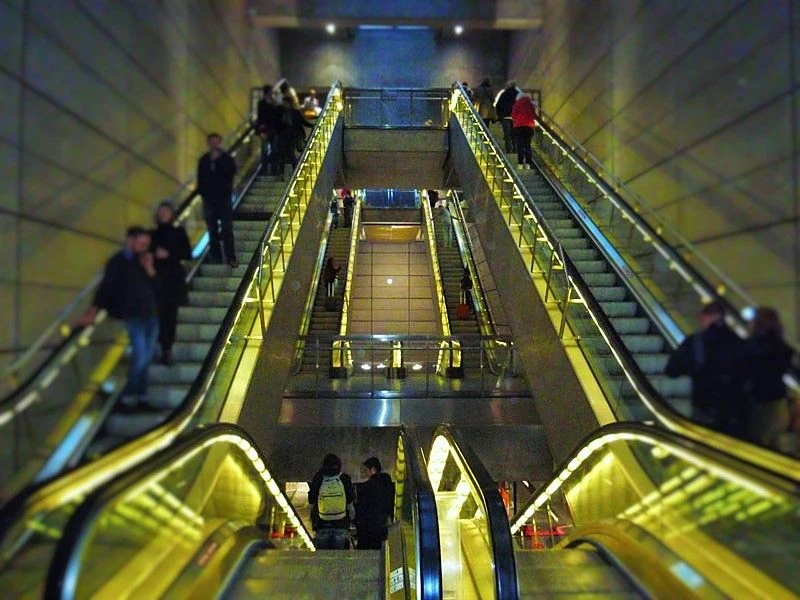
It was worth persevering with trying to make sense of the English translations on the metro ticket machine, though after five minutes of befuddlement, I wasn’t wholly convinced I’d actully bought the correct ticket.
Something to keep in mind is that rail passes aren’t ever valid on metro systems, but it can be easy to get in the habit of not having to buy a ticket before boarding any train, particularly at stations with no ticket barriers.
Having enjoyed a lovely supper in a waterside cafe, I then retraced my steps back to Norreport and boarded one of Copenhagen’s local trains; an S-Tog.
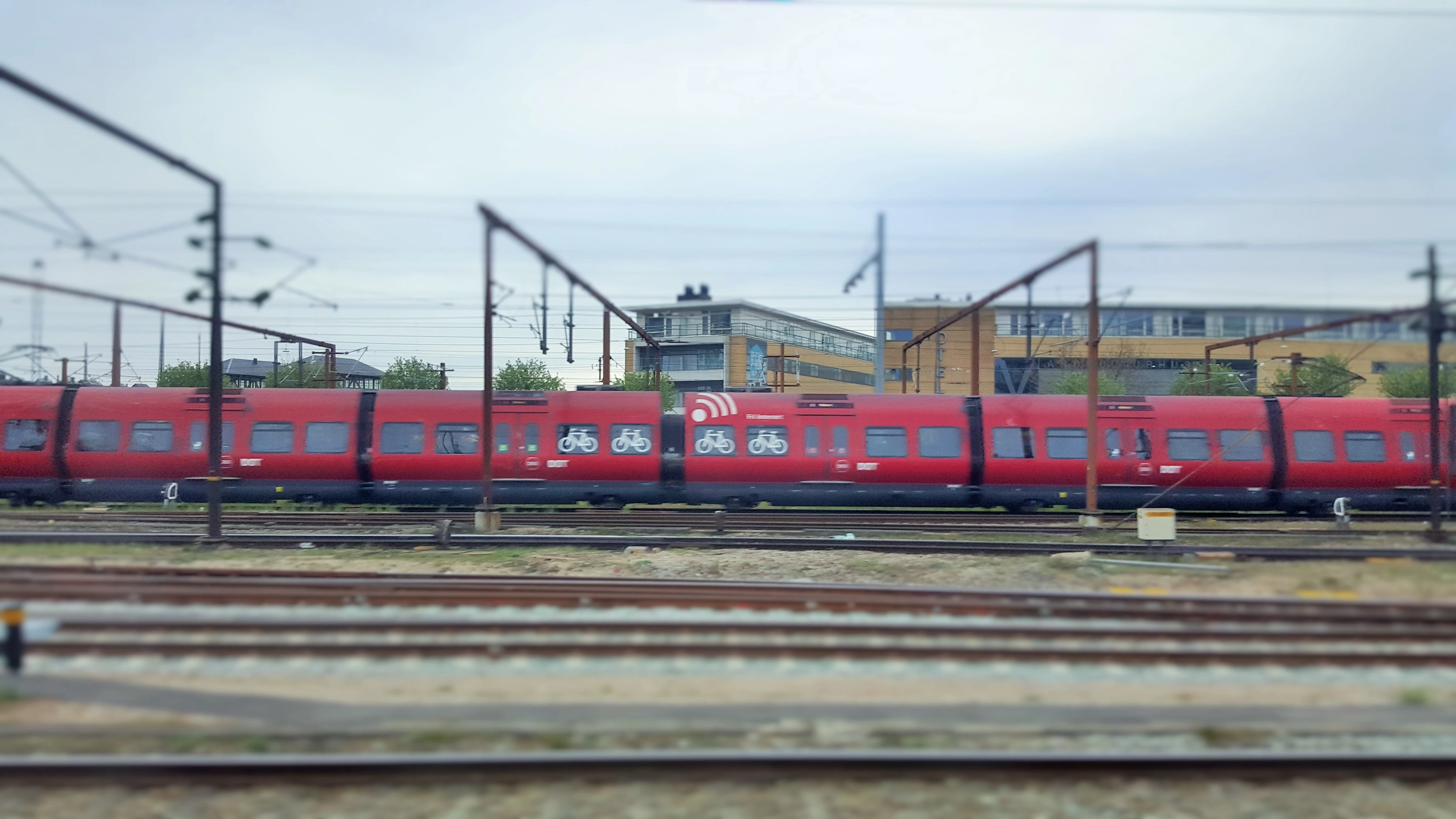
What I like about these trains is their uniformity with a livery that makes them stand out from the other trains operated by DSB; the national rail operator in Denmark.
All too often local trains in cities in Europe can be non-descript, but not here.
What can also be forgotten when using rail passes in cities is that you can more often than not hop on the local trains; the RER trains in Paris are one of the few non-Metro train services on which rail passes can’t be used.
A tip when using a rail pass is to not make an assumption that a city’s local and Metro trains are essentially the same, so be aware of the differences, particularly in locations where cross-city local trains can be used alternatives to metros, such as Berlin, Copenhagen, Hamburg, Munich and Milan and now London.
Wonderful Kobenhavn H
When they were constructed back in the middle of the 19th century many large stations drew justifiable comparisons with cathedrals, with trains coming and going from spaces which resembled naves, but after night fall Kobenhavn H station has an aura of a large parish church.

The subtle, but reassuring lighting, seemed to have a calming influence as the station was as hushed as a library.
As is more common than not, at major European stations, the train arrivals and departures are not announced at all, let alone in English, so the first time user has to rely on the train departure information that’s available on the concourse.
Though the absolute need for this is becoming eclipsed by the online resources and mobile apps on which train departures can be looked up, but if you are making a brief visit to a city, going to the bother of downloading an app in order to look up one or two train times seems like a lot of effort for comparatively little reward.
If you can either find a wi-fi hotspot or don’t mind utilising your international roaming, you can look up train departures online, but you’ll also need a resource which can also tell you the platform (track) number.
And real-time, and therefore wholly accurate train departure info, can be buried in the depths of search engines.
I know because I have often had do dive down in order to bring such resources to the surface on ShowMeTheJourney; compiling those ‘Useful Links’ directories on the station pages always takes a lot longer than I thought it would.
Finding a train
Something that a UK resident will encounter time and time again at major European stations is that the train departure info is more scant than at British main stations.
We’re used to looking at departure screens which contain highly relevant items of information such as every station call which each train will be making, but on continental Europe this level of detail is rarely shown.
At Kobenhavn H station I initially struggled to find the train departure info at all, and that’s because I was looking for a large departure screen, a train departure info focus point, of the type that can be found at major stations across Europe.
I’d spotted some small-ish train departure summary screens, near one of the sets of escalators, the type of screen that tends to provide the back-up info elsewhere.
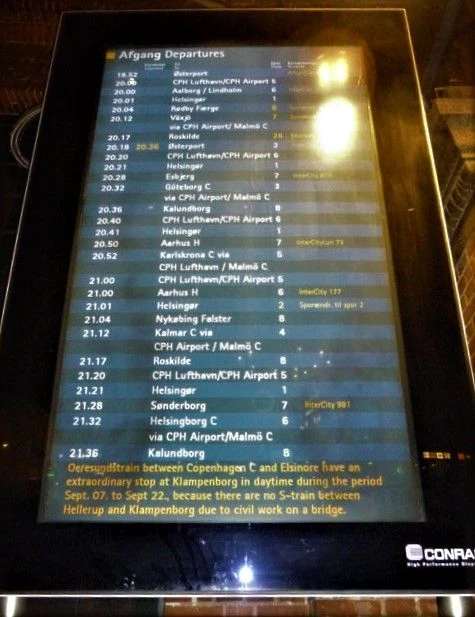
The type of screen, that more often than not, you can then keep an eye on from where you’re having a coffee etc, to find out which platform (track) your train will be leaving from.
At Kobenhavn H station, these relatively easy to miss screens are the only departure screens. They show the departure time and final destination of each train; and at most one or two of the station calls that the train is making.
I’m not singling out Kobenhavn H for any particular criticism, it’s a beautiful station that I have a high regard for, but too often at major stations on continental Europe, the electronic train departure info takes the minimum rather than the maximum approach.
Ideal if you’re a regular user of the station, so just need to know which platform/track that the next train on the route you usually take will be leaving from, but not so great if you’re not sure where you need to go and what you need to do.
I obviously knew that I need to take an Oresundtag train back to Malmo and Malmo fortunately is shown as a calling point of these trains to Sweden; which is particularly useful, as I’m sure most visitors wouldn’t even be aware that two common final destinations of these trains, Kalmar and Karlskrona are Swedish towns.
Though if I’d be heading to Lund in Sweden, for example, and didn’t know that I’d be travelling through Malmo I’d likely be confused; and this is just one example of a head-scratcher, so take your time and ask around if you're confused.

Simon Harper
I wanted to share my passion for train travel and explain how anyone can take the fantastic journeys I have taken.

This is one of more than 100 train travel guides available on ShowMeTheJourney, which will make it easier to take the train journeys you want or need to make. As always, all images were captured on trips taken by ShowMeTheJourney.
This second version of ShowMeTheJourney is exciting and new, so we are genuinely thrilled that you are here and reading this, but we also need your help.
We’re striving not to let anything get in the way of providing the most useful service possible, hence a facility has been set up with DonorBox which can be used to support the running costs and make improvements.
Instead of advertising or paywalls, your financial support will make a positive difference to delivering an enhanced service, as there’s a lot of ideas which we want to make happen.
So if you have found the info provided here to be useful, please consider saying thank you.



